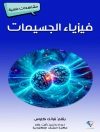Plasma Modeling: Methods and applications presents and discusses the different approaches that can be adopted for plasma modeling, giving details about theoretical and numerical methods. It describes kinetic models used in plasma investigations, develops the theory of fluid equations and hybrid models, and discusses applications and practical problems across a range of fields.
This updated second edition contains over 200 pages of new material, including an extensive new part that discusses methods to calculate data needed in plasma modeling, such as thermodynamic and transport properties, state specific rate coefficients in heavy particle collisions and electron impact cross sections. This updated research and reference text is an excellent resource to assist and direct students and researchers who want to develop research activity in the field of plasma physics in the choice of the best model for the problem of interest.
Key Features:
- New edition updated throughout
- Contains a new part covering methods to calculate data needed in plasma modelling
- Contains detailed descriptions of numerical methods
- Includes a wide variety of applications of the models
- Chapters written by experts in the field
Tabla de materias
I Kinetic Theory
1 Boltzmann and Vlasov Equations
2 Two-term Boltzmann Equation
3 Multiterm and non-local Boltzmann equation
4 Particle-based simulation
5 The ergodic method
II Fluid and Hybrid Models
6 Fluid models for collisionless magnetic reconnection
7 Magneto Hydro Dynamics Equations
8 Drift-Diffusion Models and Methods
9 Self-Consistent Kinetics
10 Hypersonic flows with detailed State-to-State kinetics using a GPU cluster
11 Hybrid Models
III Applications
12 On the coupling of vibrational and electronic kinetics with the electron energy distribution functions: past and present
13 Atmospheric pressure plasmas in H. F.
14 Direct current microarcs at atmospheric pressure
15 Multiscale phenomena in a self-organized plasma jet
16 High Enthalpy Radiating Flows in Aerophysics
17 Simulating Plasma Aerodynamics
18 Dust-Plasma Interaction: a review of dust charging theory and simulation
19 Magnetic Confinement for Thermonuclear Energy Production
20 Verification and Validation in plasma physics
IV Data for Plasma Modeling
21 Thermodynamics and Transport Properties
22 Methods for Electron-Molecule Scattering
23 Rate Coefficients in Heavy Particle Collisions
Sobre el autor
Gianpiero Colonna is Research Director in the Institute for Plasma Science and Technology at the National Research Council (CNR), Bari, Italy. His research activities are focused on plasma modeling, state-to-state self-consistent kinetics in gas discharges and hypersonic flows, thermodynamic and transport properties of plasmas, and modeling plasma plumes produced by nanosecond laser pulses.
Antonio D’Angola is Associate Professor at the University of Basilicata in Italy and Associate Researcher at Institute for Plasma Science and Technology at the National Research Council (CNR), Bari, Italy. His scientific interests are numerical methods for the simulation of plasmas using particle-in-cell and Monte Carlo codes, the calculation of thermodynamic and transport properties of ionized plasmas for industrial and aerospace applications, the investigations of radio-frequency thermal discharges, non-neutral plasmas for ultra-high vacuum systems and laser–plasma interactions for medical applications.












